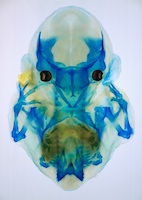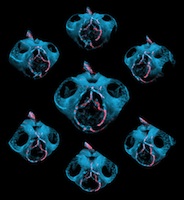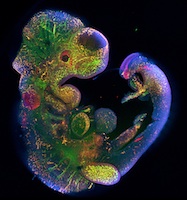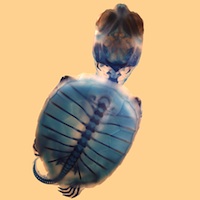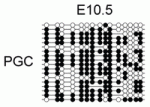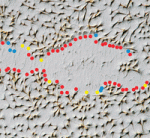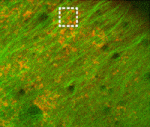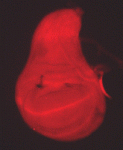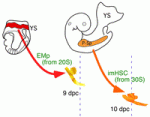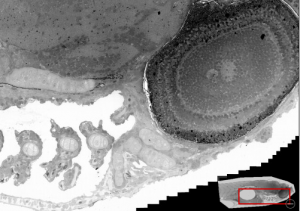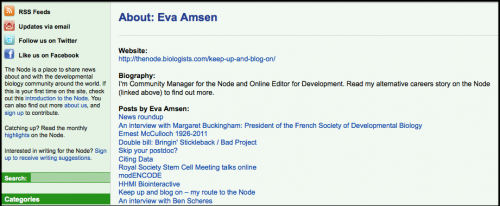This interview first appeared in Development.
Haruhiko Koseki is Director of the Developmental Genetics Research Group at the RIKEN Research Center for Allergy and Immunology in Yokohama, where he studies the epigenetic regulation of Polycomb group genes in development. He recently joined Development as an Editor, and agreed to be interviewed about his research and about science in Japan.
 When did you first become interested in developmental biology?
When did you first become interested in developmental biology?
I started university in the school of medicine, and became fascinated with comparative anatomy and embryology. In medical school in Japan, the first 4 years consist of basic classes, and the last 2 years are clinical training. I didn’t enjoy clinical training very much, and decided to move to immunology research instead of becoming a clinician. At that time, the field of immunology was exploding, and the discovery of the rearrangement of immunoglobin genes led to the study of cell differentiation in that field. My PhD research was in immunogenetics, but I discovered that immunology is not really the field to be in to study differentiation or patterning. Because of that, I made the decision to move to developmental biology. I did my postdoc with Rudi Balling in Freiburg (Germany), working on development based on mouse genetics. I really enjoyed life in Freiburg, and during my time there I published my first paper in Development.
How does research in Japan compare with research in Europe?
When I was in Germany, I learned that, in Japan, science is not fundamental science, but it’s science aimed at technology. We’re always asked about the social benefit of our discoveries. That is a natural question to ask, but I think, in Europe, people just appreciate science for the discovery.
Another difference used to be the budget invested into science. Until recently, it was much smaller in Japan compared with Europe or the USA, but in the last few decades this has changed, and at the moment it’s not very different from Europe. But I’m not sure our productivity is at the same level as that of European scientists. I think we’re not very good at sharing resources, infrastructure or ideas. It also seems that Japanese postdocs and students are not interacting much with each other. They’re relatively quiet and shy compared with European students. Traditionally, we’re educated to behave as modestly and quietly as possible. But now we have many foreign students and postdocs, and I think many students are starting to notice that this shy attitude is not ideal to get ahead in science.
What are you currently working on?
I’m mostly studying the epigenetic regulation underlying the maintenance of certain cell types and differentiation. When I did my postdoc in Freiburg, I was investigating how the notochord regulates somite differentiation, but when I got back to Japan in 1994, I realized that field is so competitive. I didn’t want to do similar things to what everyone else was already doing. At that time, my main interest was axial skeletal patterning. In the early 1990s, many people working on mammalian axial patterning were looking at Hox and signalling cascades. In Drosophila, Polycomb was already known to be a very important regulator for anterior/posterior specification, so I decided to work on Polycomb in the mouse. I used the system developed by Andras Nagy in Toronto (Canada) to generate many knockouts for components of mouse Polycomb complexes. Knockouts enabled us to see whether the mammalian Polycomb proteins are doing something important during development, but it’s difficult to address the underlying mechanisms by using developing embryos because of their cellular heterogeneity. To bypass this issue, we’re now focusing on ES cells as a model to study Polycomb function, to find out how various Polycomb complexes cooperate to maintain certain cell types and how their functions are modified when cells differentiate into different states. Now the critical issue is learning how catalytic activities and chromatin binding of Polycomb complexes are regulated during cell cycle progression. Ideally I’d want to get back to real embryos, but for that we need more technical breakthroughs – maybe a new device to image the chromatin status of certain loci in the living embryo, or something like that.
What are some other projects that your research group is working on?
Most of us are working on various aspects of Polycomb function. Polycomb proteins form at least a few multimeric protein complexes, but each component also interacts with many other modules, outside of Polycomb complexes, during differentiation or cell cycle progression, and approximately half of my research group is studying these interactions. For example, work with knockout mice shows that the axial skeleton phenotype of the DNA methyltransferase mutant is very similar to that of the Polycomb knockout. That suggests that there could be a functional and profound interaction between Polycomb and DNA methylation mechanisms, and that’s one of the things we’re investigating. This is a big challenge for us because of its extensive complexity and redundancy.
You also administer the mouse facility at your institute. Who uses this facility?
The mouse facility is shared by the five different institutes that make up the Yokohama RIKEN site. The animal facility is mainly used by the immunologists, but is increasingly also occupied by people from the institutes for human genetics, ‘omics’ sciences and plant sciences. This suggests that mouse genetics is becoming a more general tool to address a wide spectrum of biological and medical questions. Mouse genetics has developed in parallel with immunology, developmental biology and neurosciences, and will be further advanced by collaborating with many other fields of biomedical sciences, as well as other disciplines. It is really exciting to see with my own eyes how things are developing in this field. I am particularly interested to see the upcoming contribution of mouse genetics to the understanding of pathogenic mechanisms underlying various human diseases.
How have you experienced your first few months as a Development Editor?
It’s a great pleasure, but I’m still getting accustomed to the job, so it’s still taking up a lot of time. This is my first experience as an academic editor, and I learned a lot in the last few months, particularly from reviewers’ comments. Geographically, we’re very isolated in Japan, and not readily exposed to the way science is discussed and evaluated in the USA or Europe. Now, through reviewer comments, I get a look into how people are thinking about papers and how they express their views.
Are there any particular papers that you would really like to see people submit to Development?
Developmental biology is linked to several other fields. For example, imaging is becoming very quantitative and mathematical modelling is now used to describe developmental processes. Unfortunately, genomics is still a bit far from developmental biology, because of the heterogeneity of cells and quantitative limitations of samples. With technical breakthroughs such as chromatin immunoprecipitation, the field of genomics is moving closer to developmental biology, but many genomics researchers don’t consider their work in that context. There might eventually be a lot of genomics studies that are very interesting in terms of developmental biology, but genomics researchers might not think of submitting them to Development. The same is true, for example, for transcriptome and metabolome studies.
What would people be surprised to find out about you?
I have played volleyball since I was a high school student. I didn’t have a lot of opportunity to play when I was in Germany, unfortunately, but except for these 3 years in Freiburg, I have kept playing. I’m now 50, and that’s old in terms of playing volleyball. Ten years ago, I had a fracture on my right ankle and it took almost half a year to recover. Recently, I’m a bit cautious of getting injured. But I still join in competitive games and sometimes go to the other side of Japan for competitions.
 (2 votes)
(2 votes)
 Loading...
Loading...


 (No Ratings Yet)
(No Ratings Yet) (1 votes)
(1 votes)